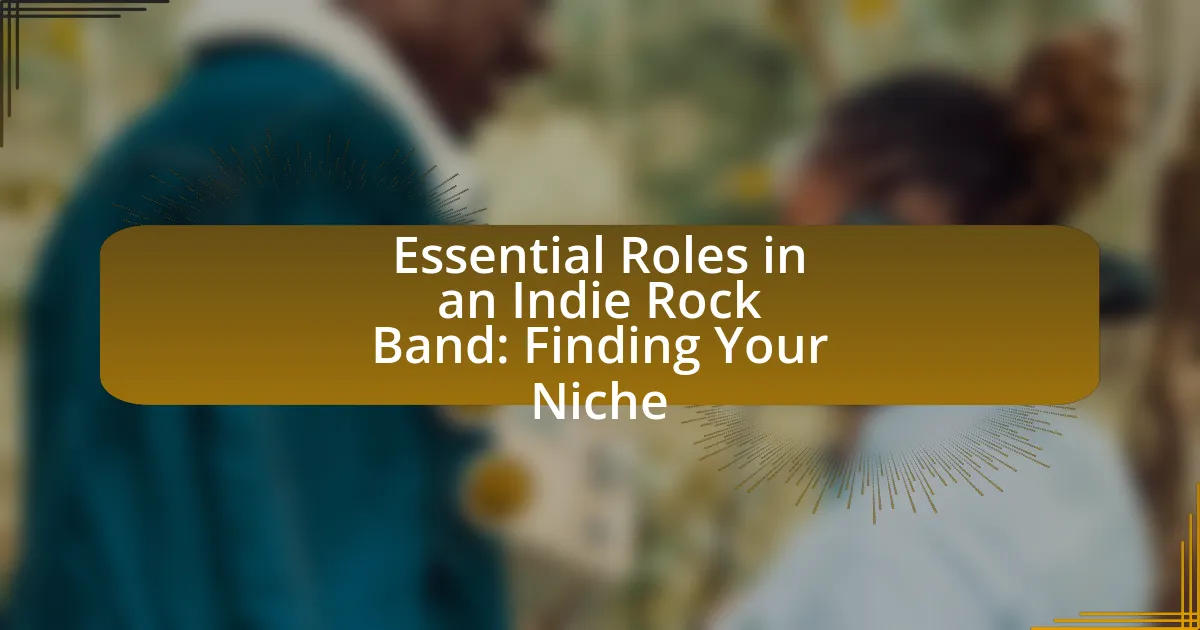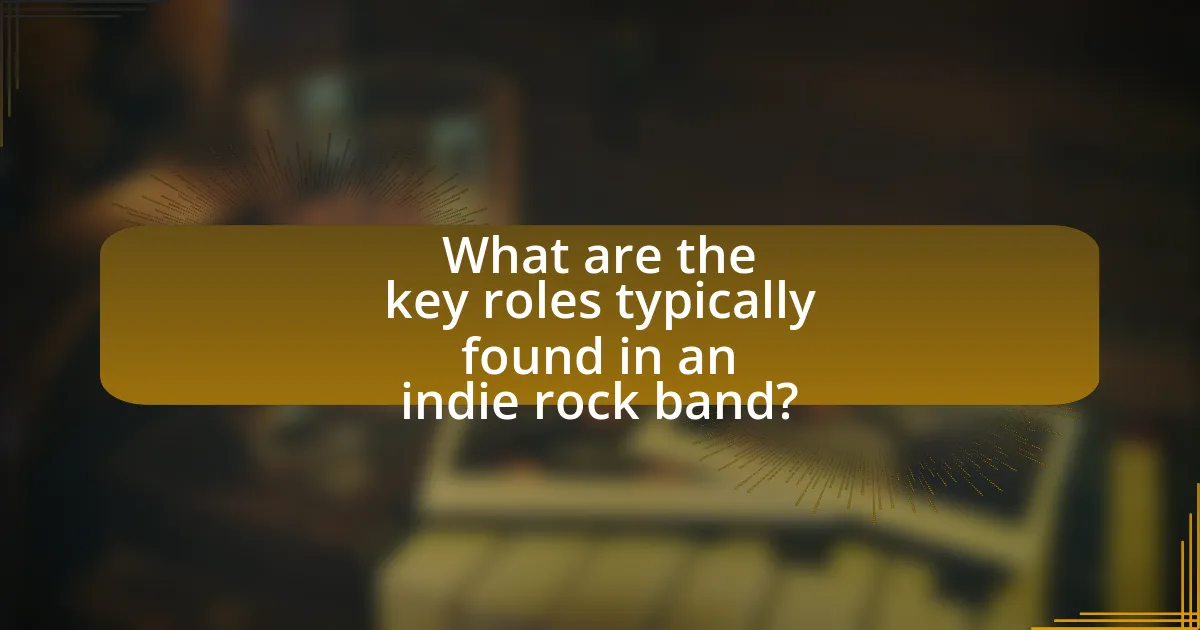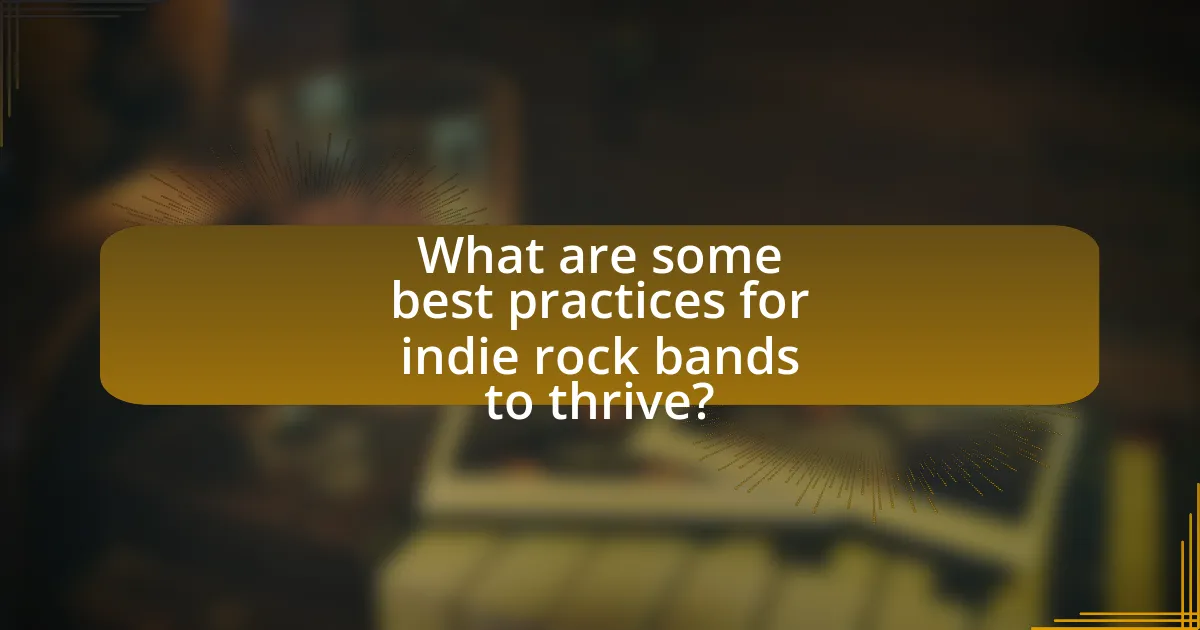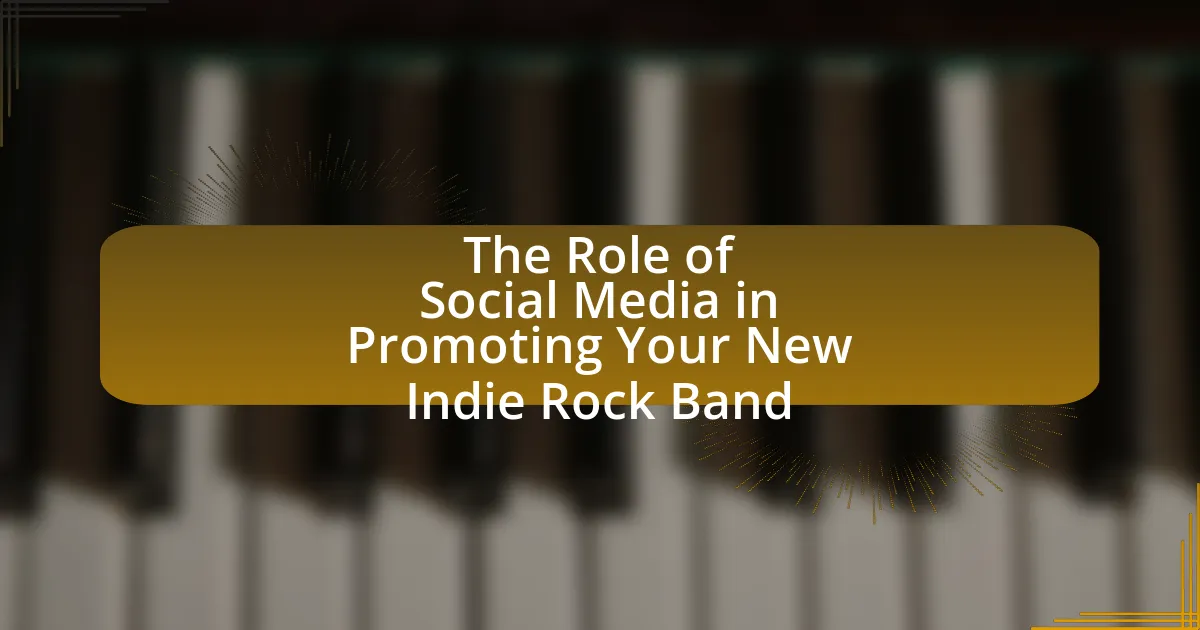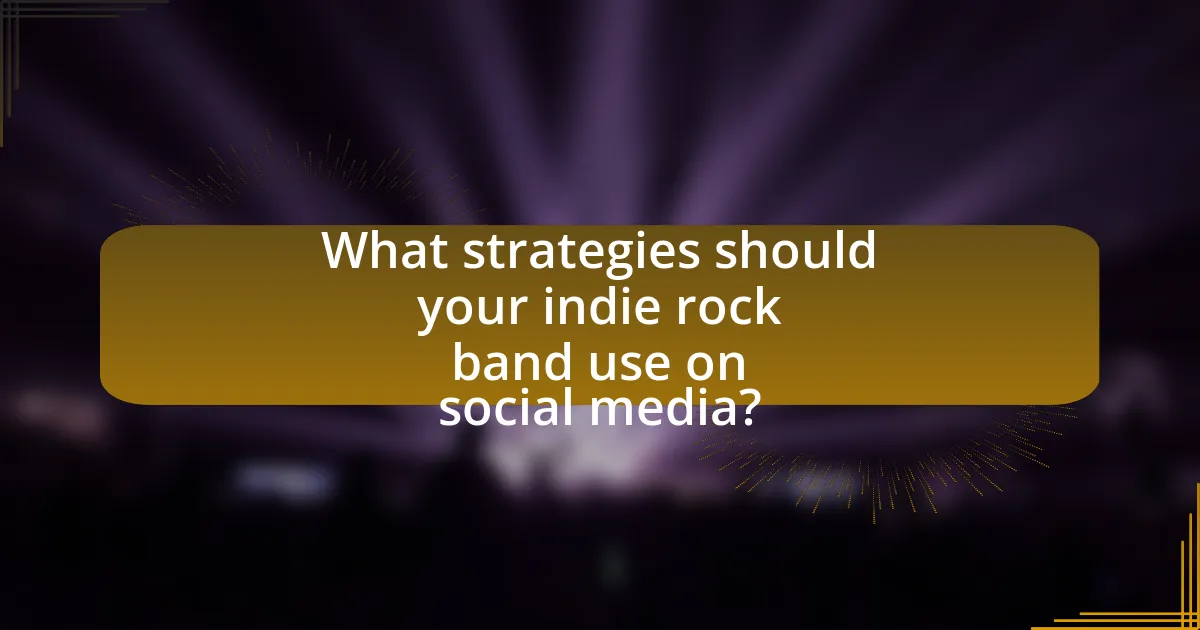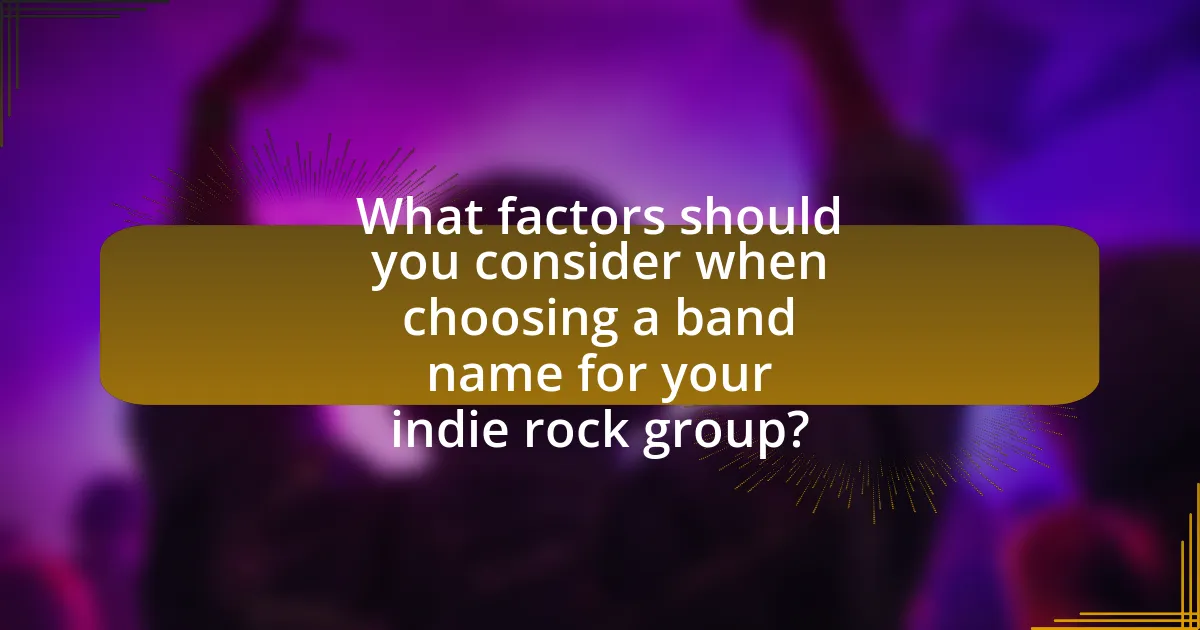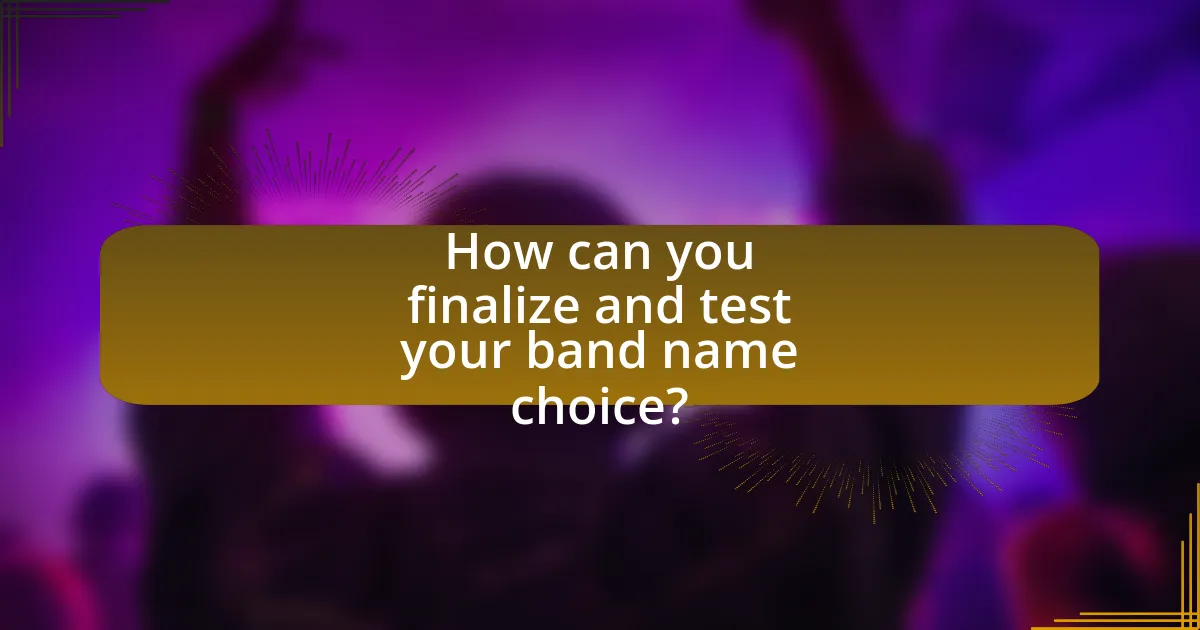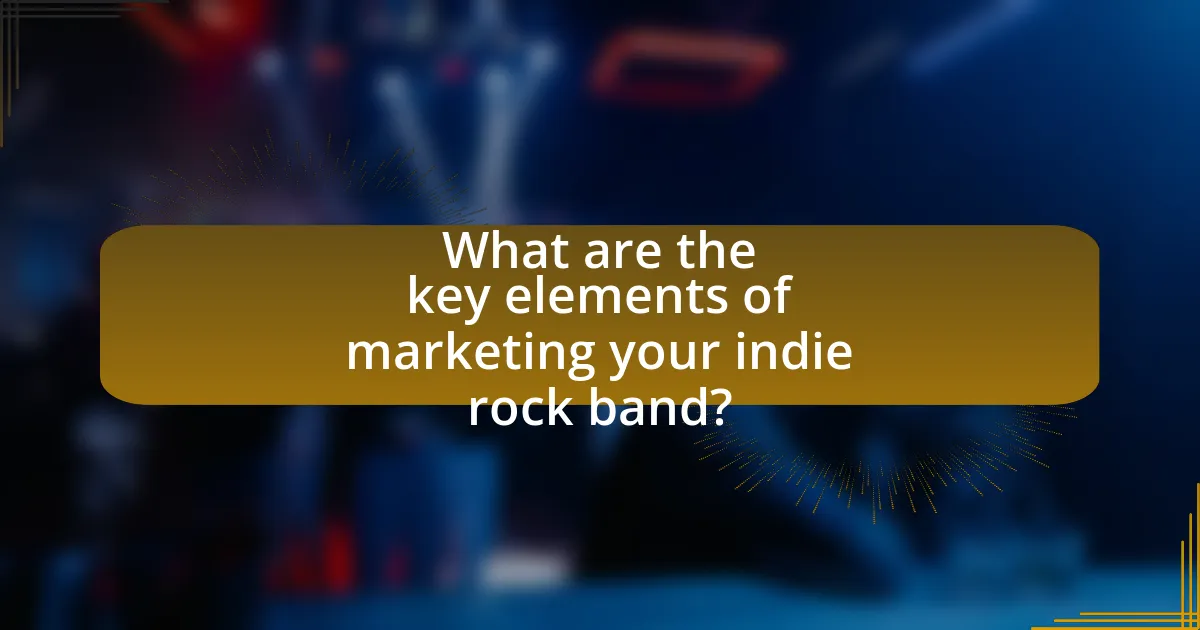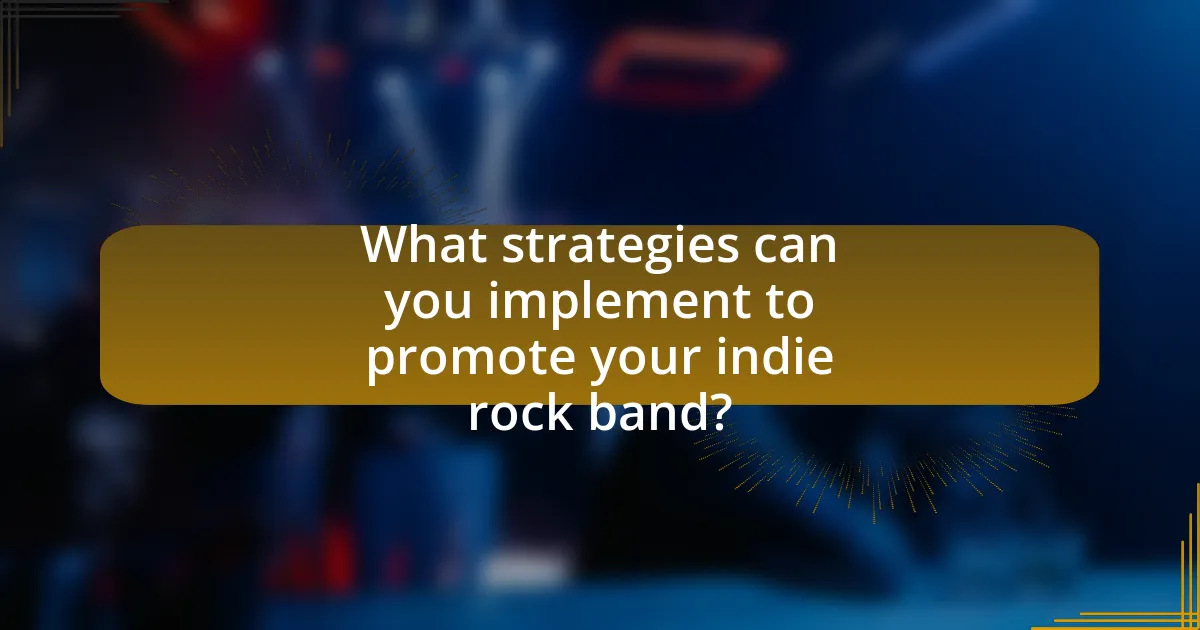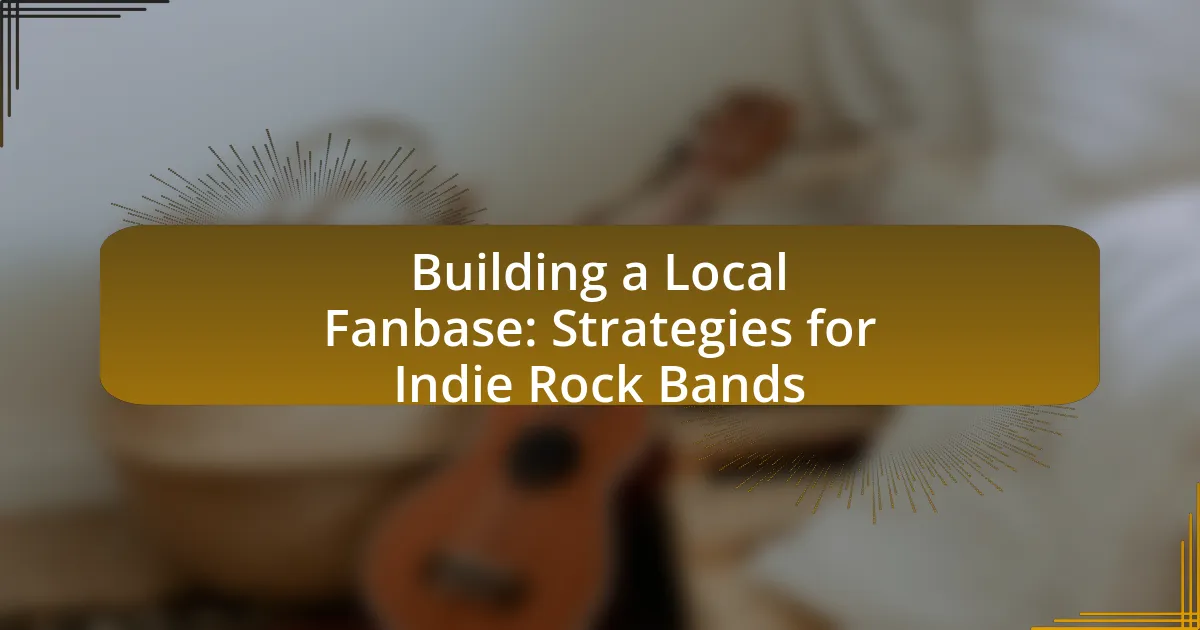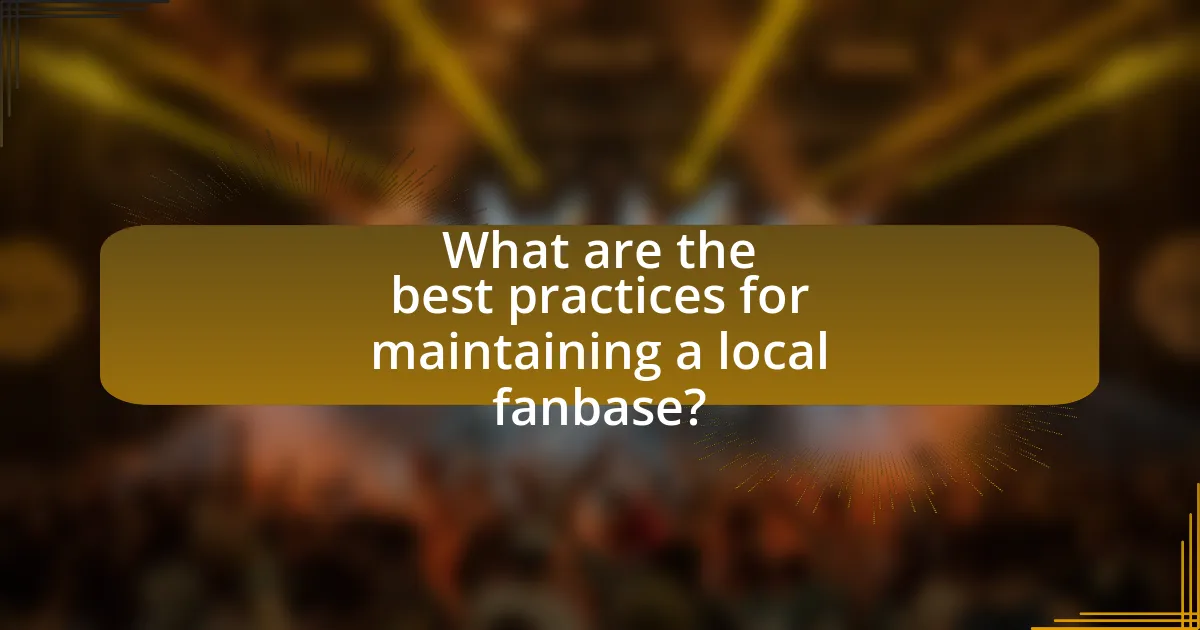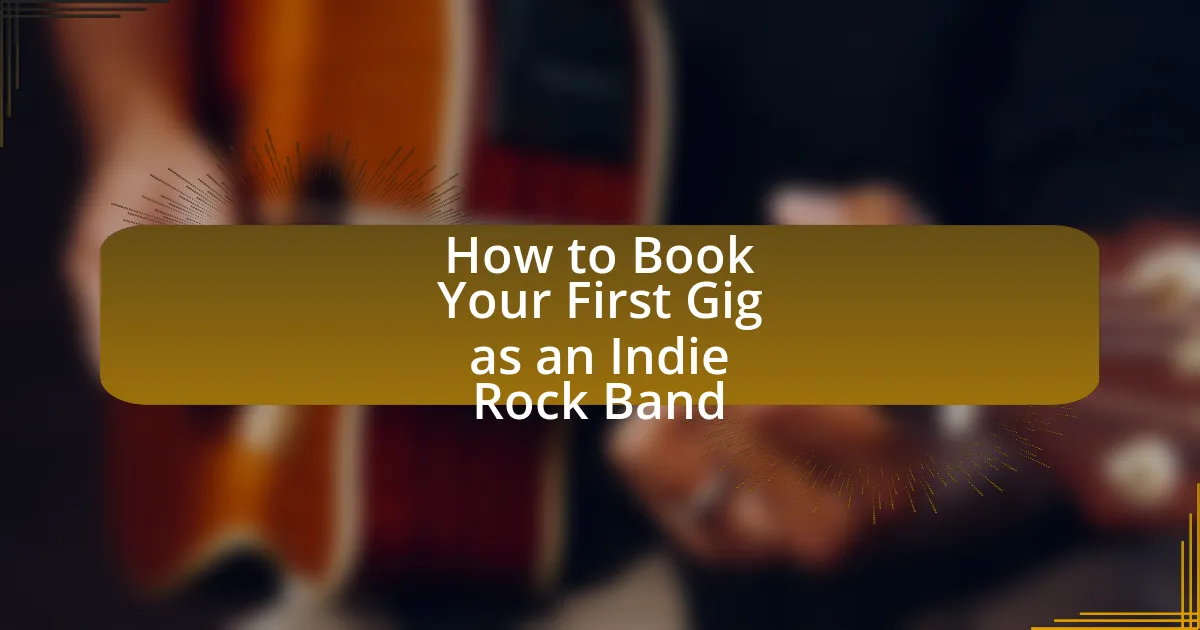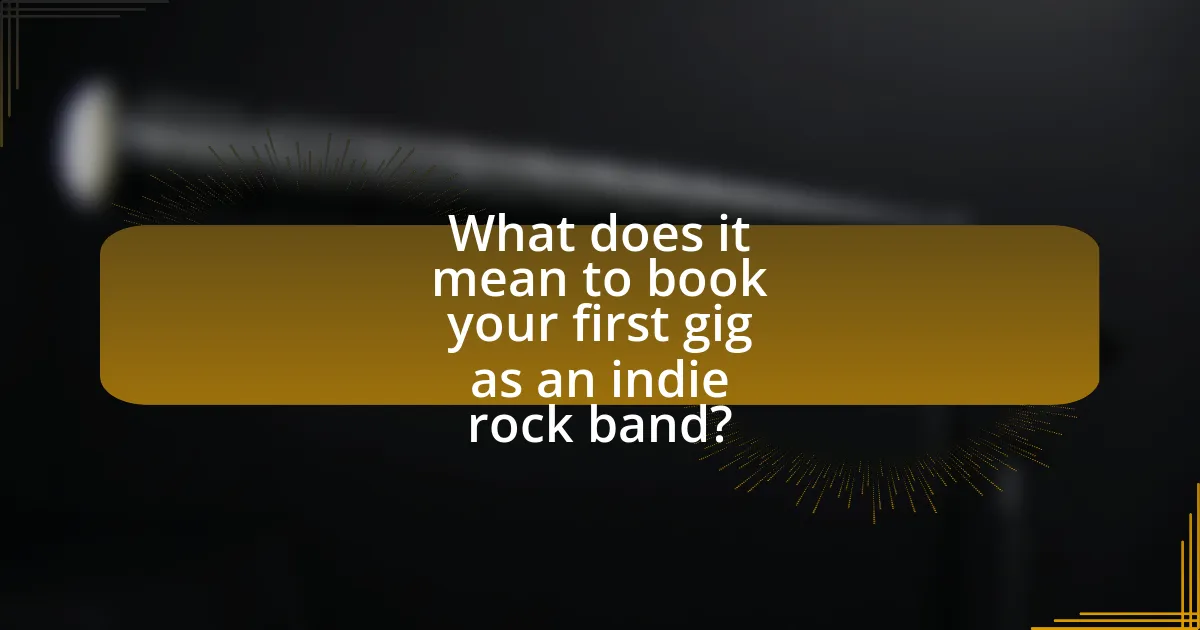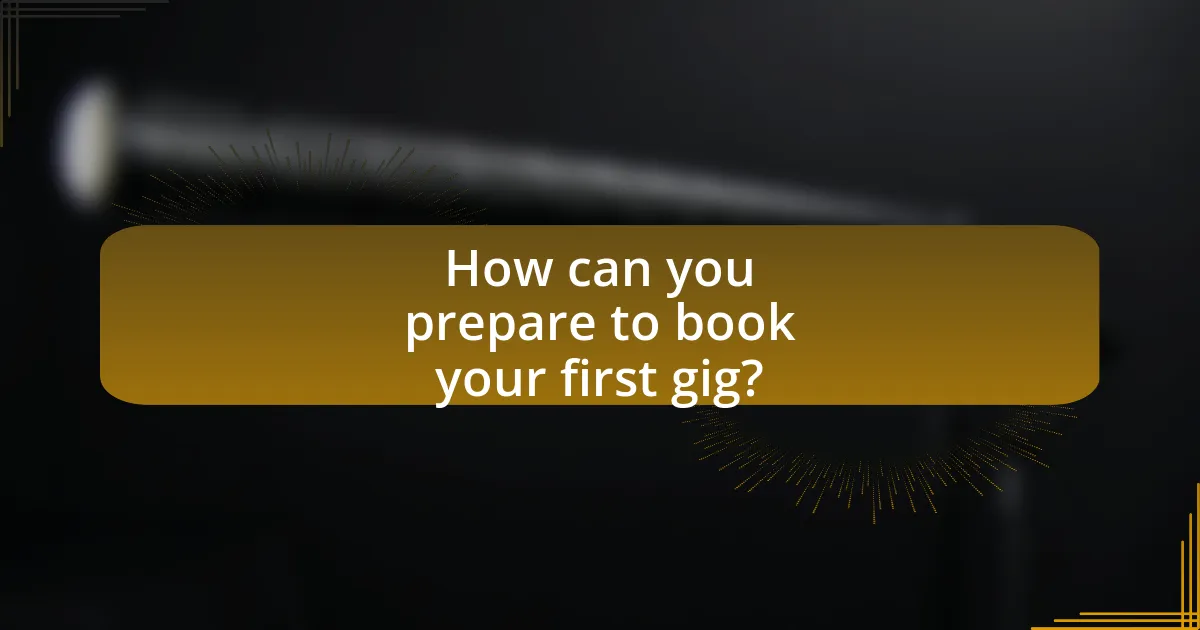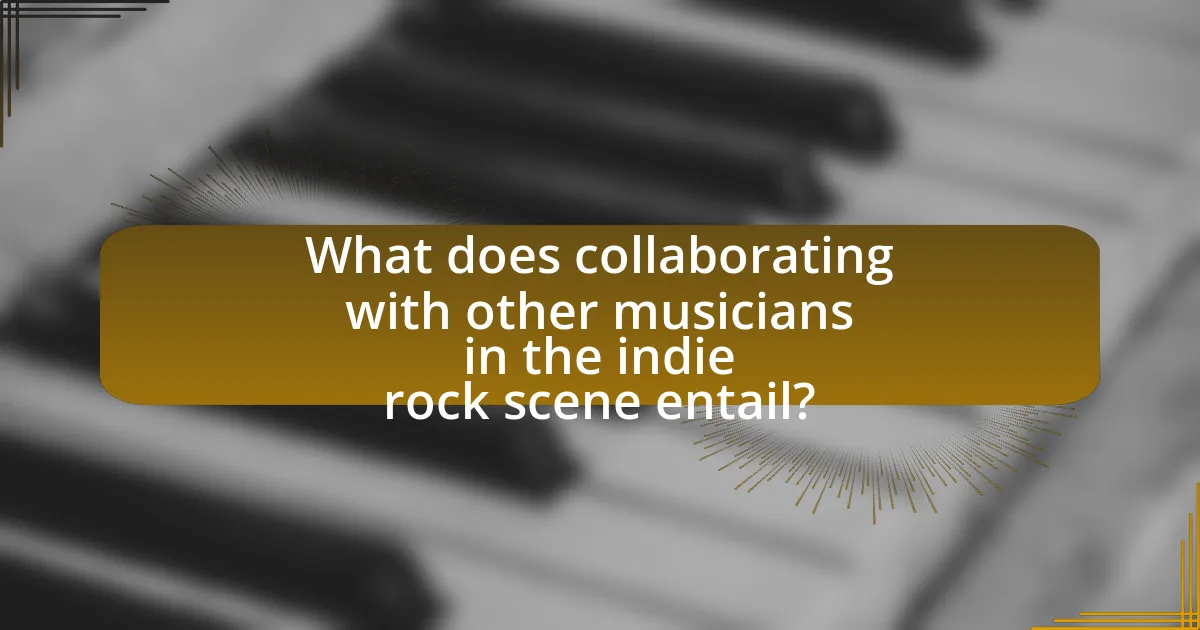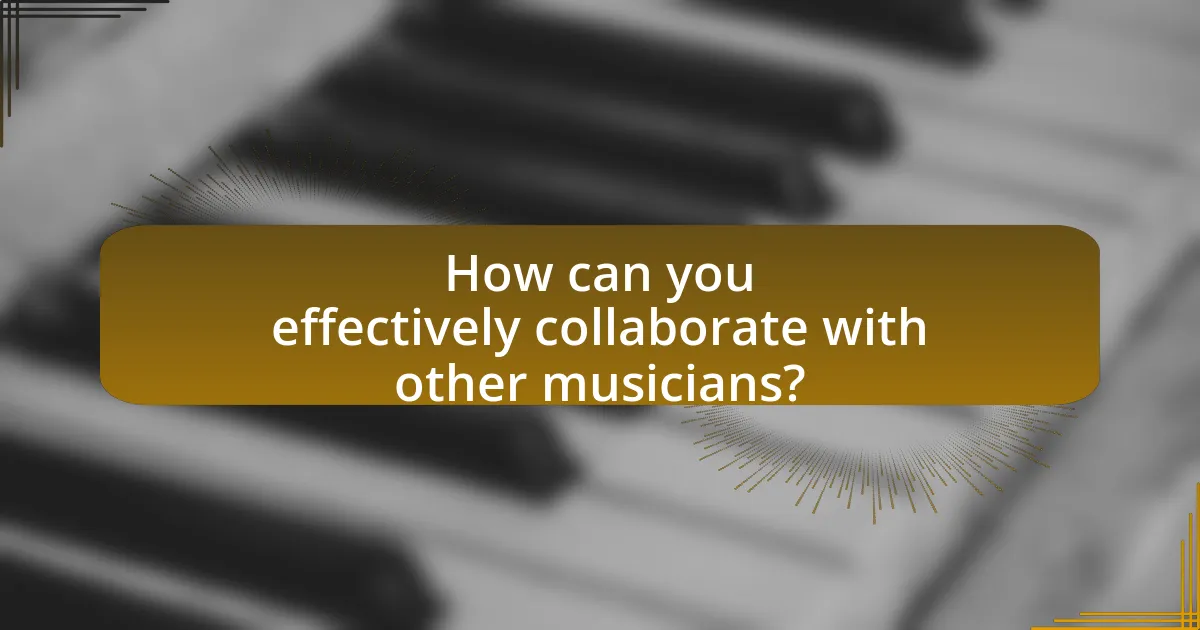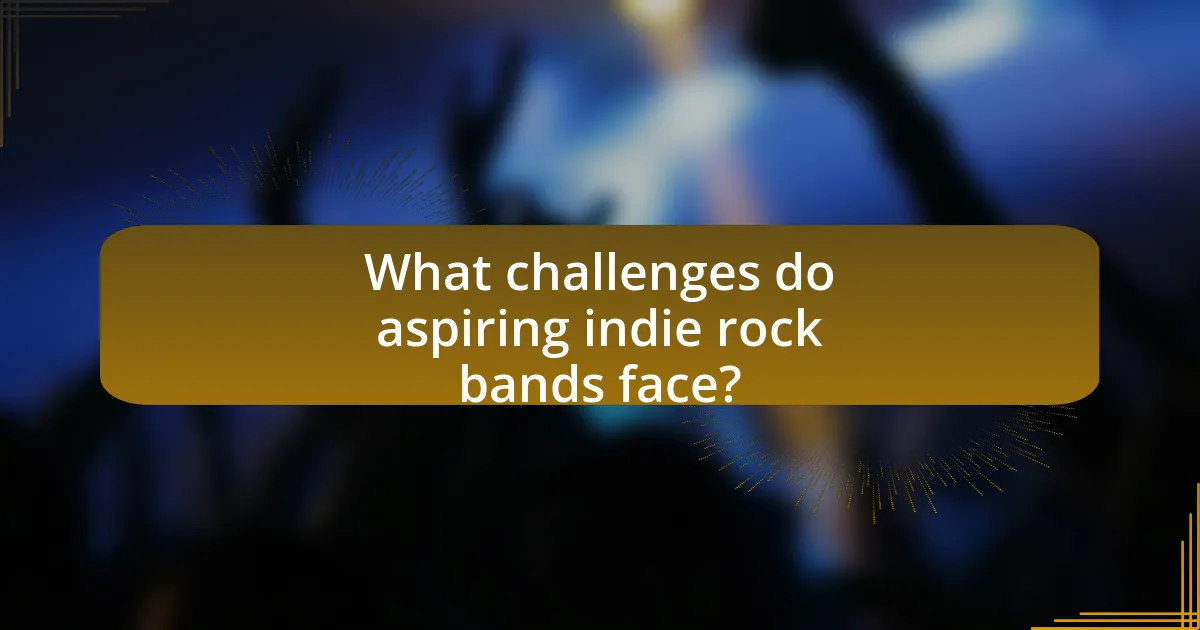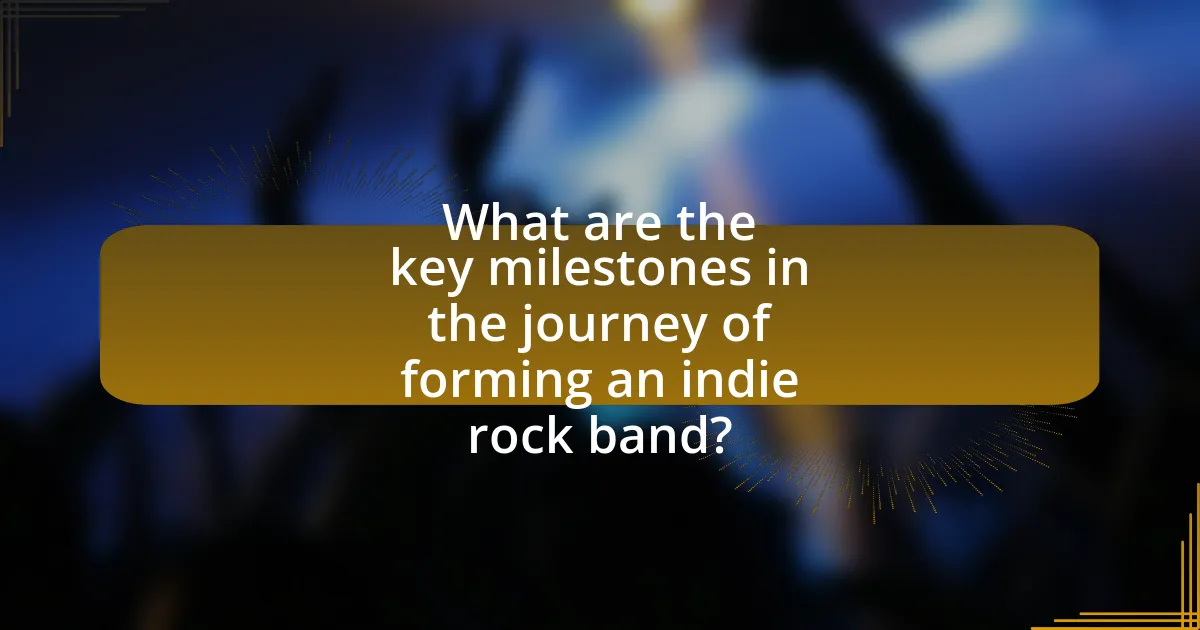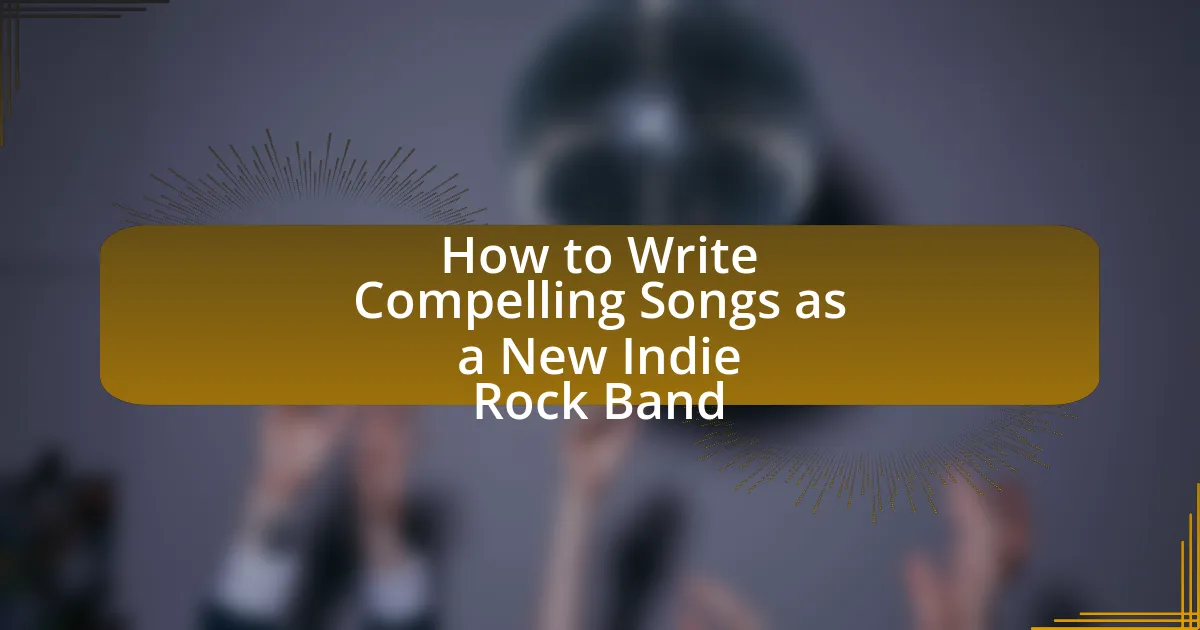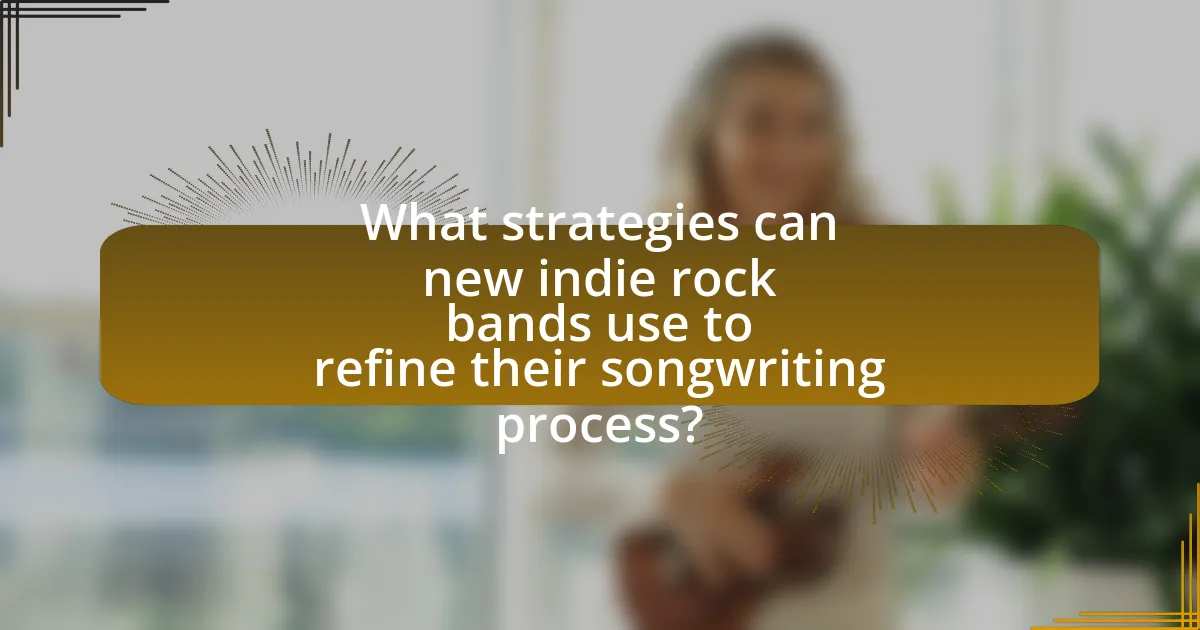The article focuses on essential tips for indie rock bands seeking the ideal rehearsal space. Key considerations include location, size, soundproofing, cost, and availability, all of which significantly impact rehearsal effectiveness and band performance. The article also explores the advantages of central locations, accessibility for band members and equipment, and the importance of amenities. Additionally, it addresses budget constraints, common pitfalls in selecting spaces, and practical strategies for securing a suitable rehearsal environment. Overall, the content provides a comprehensive guide to help bands navigate the complexities of finding an appropriate rehearsal space.

What should you consider when searching for a rehearsal space for your indie rock band?
When searching for a rehearsal space for your indie rock band, consider the location, size, soundproofing, cost, and availability. The location should be easily accessible for all band members to encourage regular practice. The size must accommodate the band comfortably, allowing for movement and equipment setup. Soundproofing is essential to minimize noise disturbances to neighbors and to ensure a focused rehearsal environment. Cost is a critical factor; it should fit within the band’s budget while providing necessary amenities. Lastly, availability is important to ensure that the space can be booked consistently for rehearsals. These considerations help create an effective and conducive environment for practice, ultimately enhancing the band’s performance quality.
How does location impact your choice of rehearsal space?
Location significantly impacts the choice of rehearsal space by influencing accessibility, noise regulations, and the availability of resources. Proximity to band members’ residences ensures convenience, reducing travel time and fostering consistent attendance. Additionally, certain areas may have stricter noise ordinances, which can limit rehearsal times or require soundproofing measures. Furthermore, locations near music stores or recording studios provide easy access to equipment and professional services, enhancing the rehearsal experience. These factors collectively shape the decision-making process for selecting an optimal rehearsal space.
What are the advantages of a central location for rehearsals?
A central location for rehearsals offers accessibility for all band members, reducing travel time and costs. This convenience encourages consistent attendance, which is crucial for maintaining group cohesion and productivity. Additionally, a central venue can attract more potential collaborators or guests, enhancing networking opportunities. Studies show that shorter travel distances can lead to increased rehearsal frequency, ultimately improving the band’s performance quality.
How can accessibility affect band members and equipment transport?
Accessibility significantly impacts band members and equipment transport by determining how easily musicians can reach rehearsal spaces and how efficiently they can move their gear. For instance, if a rehearsal space lacks ramps, elevators, or adequate parking, band members with mobility challenges may struggle to enter, which can lead to delays and hinder collaboration. Additionally, spaces that are difficult to access may require more time and effort to transport heavy equipment, such as amplifiers and instruments, potentially increasing the risk of damage during transit. Research indicates that 1 in 5 people in the U.S. have a disability, highlighting the importance of accessible venues for inclusivity and effective practice sessions.
What are the essential features of an ideal rehearsal space?
An ideal rehearsal space must have adequate soundproofing to minimize external noise interference. This feature is crucial for musicians to focus on their performance without distractions. Additionally, the space should be spacious enough to accommodate all band members and their equipment comfortably, allowing for free movement and collaboration. Access to essential amenities such as electricity, lighting, and ventilation is also vital for a productive rehearsal environment. Furthermore, the location should be easily accessible for all members, ideally situated in a safe area with parking options. These features collectively enhance the rehearsal experience, ensuring that bands can practice effectively and efficiently.
How important is soundproofing in a rehearsal space?
Soundproofing is crucial in a rehearsal space as it minimizes noise leakage, allowing musicians to practice without disturbing neighbors or being interrupted by external sounds. Effective soundproofing enhances focus and creativity, enabling bands to refine their sound and performance. Studies indicate that soundproofed environments can improve rehearsal efficiency by up to 30%, as musicians can concentrate better without distractions. Additionally, soundproofing protects the integrity of the music being created, ensuring that the rehearsal experience is productive and enjoyable.
What equipment and amenities should be available in the space?
The space should have essential equipment and amenities such as amplifiers, microphones, a drum kit, and soundproofing. These items are crucial for an indie rock band to effectively rehearse and produce quality sound. Additionally, amenities like comfortable seating, adequate lighting, and access to power outlets enhance the rehearsal experience. The presence of these features ensures that the band can focus on their music without distractions, facilitating a productive environment for practice and creativity.
How can budget constraints influence your search for a rehearsal space?
Budget constraints significantly limit the options available for finding a rehearsal space. When financial resources are restricted, bands may need to prioritize affordability over location, amenities, or size, often leading them to consider less desirable areas or smaller spaces that fit within their budget. For instance, a study by the National Endowment for the Arts indicates that 60% of artists report financial limitations as a primary barrier to accessing creative spaces. This financial pressure can also necessitate compromises on essential features, such as soundproofing or accessibility, which can ultimately affect the quality of rehearsals and overall band performance.
What are the typical costs associated with renting a rehearsal space?
The typical costs associated with renting a rehearsal space range from $15 to $50 per hour, depending on location, amenities, and size. In urban areas, prices tend to be higher due to demand, with some spaces charging up to $100 per hour for premium facilities. Additionally, many rehearsal spaces offer monthly rental options, which can reduce the hourly rate significantly, often ranging from $300 to $1,200 per month for regular access. These costs reflect the need for soundproofing, equipment availability, and the overall quality of the space, which are crucial for effective rehearsals.
How can you find affordable options without compromising quality?
To find affordable options without compromising quality for a rehearsal space, research local venues that offer competitive rates while maintaining good acoustics and equipment. Many community centers and schools provide affordable rental options, often equipped with soundproof rooms and instruments. According to a survey by the National Association of Music Merchants, 60% of musicians prioritize sound quality over price, indicating that affordable spaces can still meet high standards. Additionally, consider negotiating rates for longer-term rentals, as many venues offer discounts for consistent bookings.

What are the best strategies for finding available rehearsal spaces?
The best strategies for finding available rehearsal spaces include utilizing online platforms, networking within the music community, and contacting local venues directly. Online platforms such as RehearsalSpace.com and Peerspace allow musicians to search for and book rehearsal spaces based on location and availability. Networking with other musicians can lead to recommendations for spaces that may not be widely advertised. Additionally, reaching out to local music venues, community centers, or schools can uncover hidden opportunities, as many of these places offer rehearsal space during off-peak hours. These methods are effective because they leverage both technology and community connections to maximize options for securing rehearsal space.
How can online resources assist in your search for rehearsal spaces?
Online resources can significantly enhance your search for rehearsal spaces by providing comprehensive listings, user reviews, and location-based searches. Websites dedicated to music venues and rehearsal spaces, such as RehearsalSpace.com and Peerspace, allow users to filter options based on specific needs like size, equipment availability, and pricing. Additionally, social media platforms and community forums enable musicians to connect and share recommendations, increasing access to lesser-known or private spaces. According to a survey by the National Association of Music Merchants, 70% of musicians reported using online platforms to find rehearsal locations, highlighting the effectiveness of these resources in facilitating the search process.
What websites or platforms are most effective for finding rehearsal spaces?
The most effective websites and platforms for finding rehearsal spaces include Peerspace, Splacer, and RehearsalSpace.com. Peerspace offers a wide range of unique venues for various needs, while Splacer focuses on creative spaces for events and rehearsals. RehearsalSpace.com specifically caters to musicians, providing a directory of rehearsal studios across different locations. These platforms are widely used by bands and artists, making them reliable resources for securing rehearsal spaces.
How can social media help connect with local venues or other bands?
Social media can effectively connect local bands with venues by providing platforms for direct communication and promotion. Bands can utilize social media to showcase their music, share performance schedules, and engage with local audiences, which increases visibility to venue owners seeking talent for events. Additionally, venues often use social media to announce booking opportunities and events, allowing bands to respond and express interest directly. According to a 2021 survey by Eventbrite, 80% of event organizers reported using social media to discover new talent, highlighting its role in facilitating connections within the music community.
What role do local music communities play in finding rehearsal spaces?
Local music communities play a crucial role in finding rehearsal spaces by facilitating connections among musicians and sharing resources. These communities often maintain networks that include local venues, studios, and private spaces available for practice, which can be invaluable for indie rock bands seeking affordable and accessible options. For instance, many local music groups utilize social media platforms to post available spaces or organize collective searches, enhancing the likelihood of finding suitable rehearsal locations. Additionally, community events and gatherings often provide opportunities for musicians to discuss and recommend spaces based on personal experiences, further aiding in the search for rehearsal venues.
How can networking with other musicians lead to space recommendations?
Networking with other musicians can lead to space recommendations by facilitating the exchange of information about available rehearsal spaces. Musicians often share their experiences and insights regarding locations that are suitable for practice, which can include details about acoustics, accessibility, and cost. For instance, a musician who has previously rented a studio may recommend it based on positive experiences, thus providing valuable leads to others seeking similar spaces. Additionally, local music communities, whether online or in-person, often have forums or groups where members post about available spaces, further enhancing the likelihood of finding a suitable rehearsal environment.
What local organizations or groups should you consider joining?
Consider joining local music associations, community arts organizations, and indie musician collectives. These groups often provide resources, networking opportunities, and access to rehearsal spaces tailored for indie rock bands. For instance, organizations like the American Federation of Musicians offer support and advocacy for musicians, while local arts councils frequently host events and workshops that can connect you with other artists and venues. Engaging with these organizations can enhance your band’s visibility and facilitate collaboration within the local music scene.

What are common pitfalls to avoid when selecting a rehearsal space?
Common pitfalls to avoid when selecting a rehearsal space include overlooking soundproofing, neglecting accessibility, and failing to consider the size and layout. Soundproofing is crucial to prevent disturbing neighbors and to ensure a focused practice environment; inadequate sound insulation can lead to complaints and interruptions. Accessibility is important for all band members and equipment; a location that is difficult to reach can hinder attendance and punctuality. Additionally, the size and layout of the space must accommodate the band’s needs; a cramped area can restrict movement and creativity, while an overly large space may lead to poor acoustics. Each of these factors can significantly impact the effectiveness of rehearsals and the overall experience for the band.
How can overlooking the terms of the rental agreement cause issues?
Overlooking the terms of the rental agreement can lead to significant issues such as unexpected fees, eviction, or loss of security deposit. When a band fails to understand specific clauses regarding noise levels, duration of use, or maintenance responsibilities, they may inadvertently violate the agreement, resulting in penalties. For instance, if a rental agreement stipulates that rehearsals must end by a certain time and the band continues past that limit, they risk eviction or additional charges. Additionally, not adhering to terms related to property damage can lead to the forfeiture of the security deposit, which is often a substantial amount. Therefore, careful review of the rental agreement is essential to avoid these potential complications.
What specific clauses should you pay attention to in a rental agreement?
In a rental agreement, specific clauses to pay attention to include the lease term, rent amount, security deposit, maintenance responsibilities, and termination conditions. The lease term defines the duration of the rental, while the rent amount specifies the monthly payment required. The security deposit clause outlines the amount required upfront and conditions for its return. Maintenance responsibilities clarify who is responsible for repairs and upkeep, and termination conditions detail the process for ending the lease, including notice periods. Understanding these clauses is crucial for ensuring a smooth rental experience and avoiding disputes.
How can misunderstandings about usage hours lead to conflicts?
Misunderstandings about usage hours can lead to conflicts by creating scheduling issues among band members or between bands sharing a rehearsal space. When one party assumes they have access to a space at a certain time, while another party believes the time is reserved for them, it can result in disputes over who has the right to use the space. For example, if a band schedules a rehearsal for 6 PM but another band believes they have the space reserved from 5 PM to 7 PM, this miscommunication can lead to frustration and tension. Clear communication and written agreements regarding usage hours are essential to prevent such conflicts.
What are the risks of choosing a space based solely on price?
Choosing a space based solely on price can lead to several significant risks, including inadequate facilities, poor acoustics, and potential safety hazards. Inadequate facilities may result in insufficient equipment or space for rehearsals, which can hinder a band’s performance quality. Poor acoustics can negatively affect sound quality, making it difficult for musicians to hear each other and practice effectively. Additionally, spaces that are cheaper may not meet safety standards, posing risks such as fire hazards or structural issues. These factors can ultimately impact a band’s ability to rehearse productively and may lead to additional costs for repairs or upgrades.
How can a low-cost space affect your band’s productivity and morale?
A low-cost space can significantly enhance a band’s productivity and morale by providing an accessible environment for regular practice without financial strain. When a band can rehearse in a budget-friendly location, it encourages more frequent sessions, fostering collaboration and creativity among members. Research indicates that consistent practice leads to improved musical skills and cohesion within the group, which directly correlates with higher morale. Additionally, the reduced financial pressure allows band members to focus on their music rather than worrying about expenses, creating a more positive and supportive atmosphere.
What hidden costs should you be aware of when renting a space?
When renting a space, hidden costs to be aware of include utilities, maintenance fees, security deposits, and potential increases in rent. Utilities such as electricity, water, and internet may not be included in the base rent, leading to unexpected monthly expenses. Maintenance fees can arise if the landlord requires tenants to cover repairs or upkeep, which can add to overall costs. Security deposits, often equivalent to one month’s rent, may be required upfront and can be non-refundable if damages occur. Additionally, landlords may increase rent after the lease term, impacting long-term budgeting. Understanding these factors is crucial for accurate financial planning when renting a rehearsal space.
What practical tips can help you secure the perfect rehearsal space?
To secure the perfect rehearsal space, prioritize location, affordability, and soundproofing. A central location minimizes travel time for band members, while affordability ensures that the space fits within your budget, which is crucial for indie bands often operating with limited funds. Soundproofing is essential to avoid disturbing neighbors and to create an optimal environment for practice. Additionally, consider the availability of necessary amenities such as electricity, restrooms, and parking. Research shows that bands who rehearse in well-equipped spaces report higher productivity and satisfaction, making these factors vital in your decision-making process.
How can you effectively communicate your needs to potential landlords?
To effectively communicate your needs to potential landlords, clearly outline your requirements in a concise manner. Specify essential factors such as space size, location, noise restrictions, and budget to ensure landlords understand your priorities. For instance, stating that you need a minimum of 500 square feet for rehearsals and a location within a 10-mile radius of downtown can help landlords assess if their properties meet your criteria. Additionally, providing context about your band’s rehearsal schedule and any specific equipment you use can further clarify your needs, making it easier for landlords to determine compatibility with their spaces.
What should you do during a site visit to evaluate the space thoroughly?
During a site visit to evaluate the space thoroughly, you should assess the acoustics, layout, and amenities of the rehearsal area. Evaluating acoustics involves listening for sound quality and potential noise issues, which are crucial for a band’s performance. Analyzing the layout includes checking the size and shape of the room to ensure it accommodates your band comfortably. Additionally, inspecting amenities such as access to power outlets, restrooms, and parking can significantly impact the rehearsal experience. These factors collectively determine whether the space meets the specific needs of an indie rock band.

